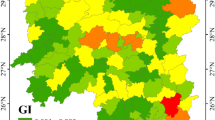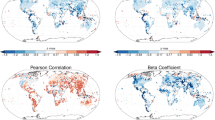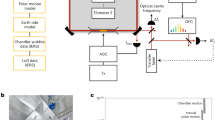Abstract
Online tools, pioneered by the Google Earth (GE), are facilitating the way in which scientists and general public interact with geospatial data in real three dimensions. However, even in Google Earth, there is no method for depicting vertical geospatial data derived from remote sensing satellites as an orbit curtain seen from above. Here, an effective solution is proposed to automatically render the vertical atmospheric data on Google Earth. The data are first processed through the Giovanni system, then, processed to be 15-second vertical data images. A generalized COLLADA model is devised based on the 15-second vertical data profile. Using the designed COLLADA models and satellite orbit coordinates, a satellite orbit model is designed and implemented in KML format to render the vertical atmospheric data in spatial and temporal ranges vividly. The whole orbit model consists of repeated model slices. The model slices, each representing 15 seconds of vertical data, are placed on the CloudSat orbit based on the size, scale, and angle with the longitude line that are precisely and separately calculated on the fly for each slice according to the CloudSat orbit coordinates. The resulting vertical scientific data can be viewed transparently or opaquely on Google Earth. Not only is the research bridged the science and data with scientists and the general public in the most popular way, but simultaneous visualization and efficient exploration of the relationships among quantitative geospatial data, e.g. comparing the vertical data profiles with MODIS and AIRS precipitation data, becomes possible.
Similar content being viewed by others
Article PDF
Author information
Authors and Affiliations
Rights and permissions
About this article
Cite this article
Chen, A., Leptoukh, G., Di, L. et al. Visualization of and Access to CloudSat Vertical Data through Google Earth. Nat Prec (2007). https://doi.org/10.1038/npre.2007.595.1
Received:
Accepted:
Published:
DOI: https://doi.org/10.1038/npre.2007.595.1



